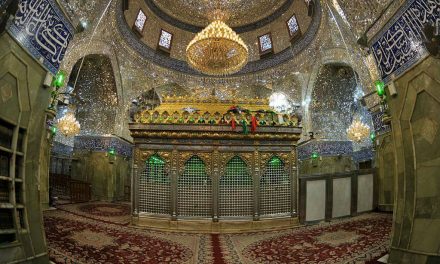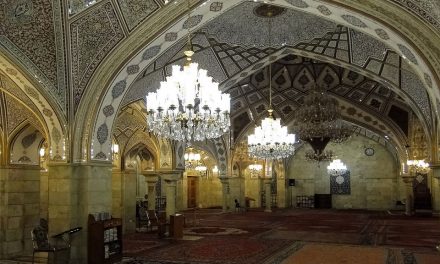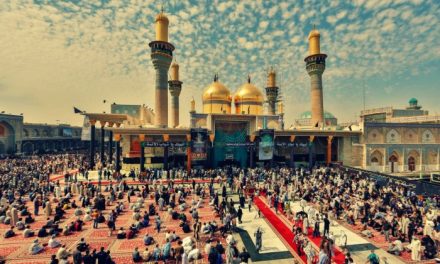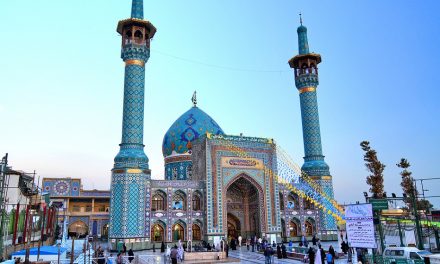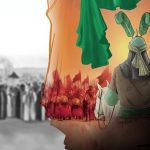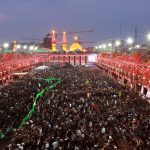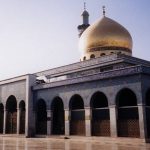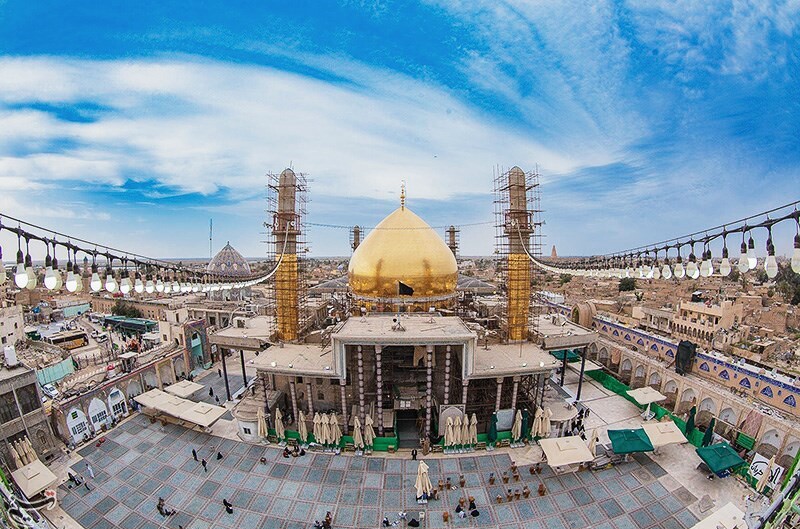
Al Askari Shrine or the Askariyya Shrine is a Shia Muslim holy site in the Iraqi city of Samarra, 125 km (78 mi) from Baghdad. It is one of the most important Shia shrines in the world, built in 944.
The dome of the shrine was destroyed in a bombing by extremists in February 2006 and its two remaining minarets were destroyed in another bombing in June 2007, causing widespread anger amongst Shia Muslims. The remaining clock tower was also destroyed in July 2007. The dome and minarets were repaired and the mosque reopened in April 2009.
The remains of the 10th and 11th Shia Imams, Imam Ali al-Hadi (AS) and his son Imam Hasan al-Askari (AS), known as: al-Askariyyain (the two Askaris), rest at the shrine. Also buried within the mosque are Hakimah Khatun, sister of Imam Ali al-Hadi (AS); and Narjis Khatun, the mother of Imam Muhammad al-Mahdi.
Adjacent to this shrine is another domed commemorative building–the Serdab (“cistern”), built over the cistern where the Twelfth Imam, Imam Muhammad al-Mahdi (AS), first entered the Minor Occultation or “hidden from the view”–whence the other title of Imam Mahdi (AS), the Hidden Imam.
History
Imam Ali al-Hadi (AS) and Imam Hasan al-Askari (AS) lived under house arrest in the part of Samarra that had been Caliph al-Mutasim’s military camp . As a result, they are known as the Askariyyain “Dwellers in the Camp”. They were martyred by poison and were buried in their house on Abi Ahmad Street near the mosque built by Mutasim.
Nasir ad-Din Shah Qajar undertook the latest remodelling of the shrine in 1868, with the golden dome added in 1905. Covered in 72,000 gold pieces and surrounded by walls of light blue tiles, the dome was a dominant feature of the Samarra skyline. It was approximately 20 m (66 ft) in diameter by 68 m (223 ft) high.
Source: wikipedia.org

